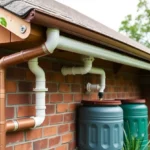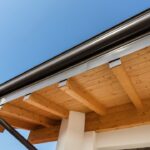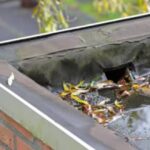When it comes to roofing, many homeowners find themselves asking, ‘which of the following roof slopes is a low-slope roof?’ Understanding the answer is crucial for making informed decisions regarding roofing installations and maintenance. The term ‘low-slope roof’ refers to a roof with a slight incline that is typically less than 4 inches of rise for every 12 inches of run. But why is this important?
Whether youre constructing a new home or considering roof replacement, knowing about different roof slopes can save you time, money, and potential damage in the future. In this article, we delve into detailed information on low-slope roofing, its benefits, materials, and maintenance tips to help homeowners make the best choices.

Understand Roof Slopes
The Importance of Roof Slope
Roof slope, or pitch, refers to the amount of vertical rise a roof has compared to its horizontal span. It’s an important consideration for many reasons. A roof’s slope impacts a buildings rainwater drainage capabilities, potential for material accumulation, and even the building’s overall aesthetics. Misunderstanding your roofs slope can lead to inefficient installations, increased costs, and undesired structural outcomes.
Common Roof Slopes
Low-Slope vs. Steep-Slope Roofs
Among the common types of roof slopes, low-slope roofs (< 4:12) and steep-slope roofs (> 4:12) are the most significant classifications. Low-slope roofs, also known as flat roofs, allow for a gentle incline that minimizes water accumulation, making them suitable for modern architectural trends and commercial buildings particularly.
What Classifies as a Low-Slope Roof?
Low-slope roofing is defined by a roof with a pitch of less than 4:12. These roofs look almost flat to the naked eye and can handle slight standing water if appropriately installed and maintained. The key advantage here lies in cost-efficiency and materials used for installation, like modified bitumen, TPO, and EPDM. For more detailed information on EPDM materials, refer to this EPDM Roofing Guide.
Popular Installation Materials for Low-Slope Roofs
Low-slope roofs have specific materials that are used to achieve optimum performance. Often, TPO, PVC, EPDM, and asphalt are used. Each of these offers particular benefits such as durability, cost-efficiency, and ease of installation. Discover more materials suited for different roofs on roofing materials guide.
Best Practices and Maintenance
Ensuring Proper Drainage and Maintenance
Regular maintenance is key to the longevity of any roof. For low-slope roofs, it involves ensuring there is no standing water, debris, or other blockages that might lead to leaks or inefficiency. Proper drains and regular inspections are advised. If youre unsure, learn how to choose a construction company for help.
The Role of Technology in Roof Maintenance
Utilizing the latest technology is a tremendous advantage when maintaining low-slope roofs. Innovations like roof inspection drones, thermal imaging, and advanced sealants have made it easier to spot and address potential issues. Keeping up with such technology can save you money and extend the life of your roof.
Advantages of Low-Slope Roofs
Low-slope roofs offer a plethora of benefits beyond aesthetics. Economically, they often require less material and effort to install. This often results in lower initial costs and easier maintenance routines. Environmentally, they also allow for installations like green roofing systems and solar panels, making them energy-efficient options. Discover more about such energy options on roofing with our TPO Roofing Guide.
Potential Challenges
Despite their many benefits, low-slope roofs can be more prone to water damage if not properly maintained. They require specific attention to the material chosen and the slopes ability to handle rainfall. High-exposure areas might demand extra protective measures to ensure efficiency and longevity.

FAQ Section
1. What materials are best for low-slope roofs?
The most common materials include EPDM, TPO, and asphalt. Each offers unique benefits in terms of cost, durability, and style.
2. How do I maintain a low-slope roof?
Regular inspections, proper drainage systems, and using technology like drones and thermal imaging will help ensure a long life span.
3. Are low-slope roofs more affordable?
Generally, yes. They often require less material and labor for installation, which translates to lower overall costs.
For further information regarding roof costs, this article offers insights into potential pricing scenarios.
This article contains affiliate links. We may earn a commission at no extra cost to you.








